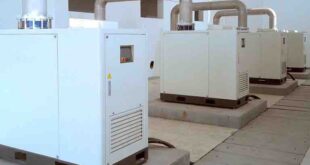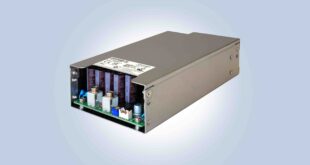The European Network of Transmission System Operators for Electricity (ENTSO-E) estimate 40,000km of new, or refurbished, high or extra-high voltage power lines will be built across Europe by 2030. Infrastructure work on this scale is a huge undertaking so intelligent engineering and efficient design will be essential for return on investment for utilities providers. Francesco Ierullo explains how composite conductor cores can extend maintenance intervals, reduce infrastructure costs, and improve performance for power line installations.
Traditional conductors consist of an outer aluminium conducting ring and a reinforcing steel core — known as aluminium conductor steel reinforced (ACSR) conductors. However, their current capacity is limited by the steel core that has a high coefficient of thermal expansion, meaning the heat from the current passing through the conductor and the ambient temperatures cause the steel to expand.
That expansion, combined with the heavy nature of steel-reinforced cables, can lead to thermal sag during hot weather or times of high power demand, when the increased current generates heat. This cable distortion can cause short circuits and power transmission disruption: in July 2021, 6,000 people in Portland, Oregon faced a power outage due to sagging overhead powerlines during a heatwave.
Compensating with composites
Composite conductor cores present an alternative to the traditional ACSR core design. Carbon fibre has a much higher strength-to-weight ratio than stainless steel, 2457 vs 63 kN m kg-1, and tensile strength properties that outperform plastic and other non-metallic materials. Additionally, carbon fiber has a lower thermal expansion coefficient than steel S355, 12×10-6 K-1 compared to 0.8×10-6 K-1.
These facts mean composite-cored cables can be pulled tighter to prevent sagging and, even more advantageously, can be strung over longer distances. Reduced sag means longer cables means less frequent tower supports needed. In one project in the Western U.S., composite cores allowed design engineers to use a smaller diameter core and double the distance between support structures to 1,200 feet. Halving the number of support structures meant the total project cost was 15% lower, which is important as carbon fibre cores are more expensive than ACSR.
Using composite cores also reduces maintenance requirements. For one thing, carbon fibre is corrosion-resistant, unlike steel, meaning cable replacement is needed less frequently. Furthermore, steel has approximately four times the relative density of carbon fibre, 7.8 vs 1.8-2.2. This means that far less strain is placed on the supporting structures by composite-cored cables, which lowers installation costs and facilitates more simple support requirements.
Despite the unfavourable trade-offs involved with ACSR cores, many utility companies are reluctant to perform a complete replacement of tower infrastructure as it requires a great amount of labor, time, and economic investment. This is particularly true in areas with uneven terrain, such as mountains where additional equipment such as helicopters may be required.
A composite solution
In place of a complete infrastructure replacement, ACSR lines can be upgraded to composite cored conductors. The lightweight, lesser degree of thermal expansion and high tensile strength of carbon fiber means less is required to support cables. This allows for more conducting aluminium in the conductor and therefore increased transmission capacity.
The upgrade is significantly cheaper than total grid replacement, as it can reuse the existing pylon and tower infrastructure. The process is also substantially quicker, which minimises disruption to energy supply. Additionally, if the composite cored conductors are used in a new area where the electrical infrastructure must start from scratch anyway, the high current capacity allows the tower count to be reduced.
Exel Composites’ experience in the electrical industry dates back to 1960: its carbon fibre composite cores are produced using cost-efficient continuous manufacturing processes of pultrusion and pull-winding, and can be spooled kilometres at a time to keep production costs low, while ensuring consistent quality.
Francesco Ierullo is head of sales for the Americas at Exel Composites.
 Engineer News Network The ultimate online news and information resource for today’s engineer
Engineer News Network The ultimate online news and information resource for today’s engineer





